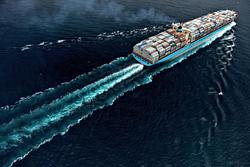VLCC Market Is Booming

Clarksons describes the markets of tanker, bulker and shipbuilding of last week.
VLCCs:
It was an interesting end to the week, with rates on routes ex-WAF rising sharply. This bullish sentiment is likely to permeate into the MEG as well, with rates there expected to rise further. Whilst this rise may be short-lived, the current high volume of cargoes means that next week should start with owners feeling bullish and pushing for higher rates.
• Suezmaxes:
A busy VLCC market in WAF absorbed a lot of enquiry and as a result, rates on routes ex-WAF fell w-o-w. A quiet market in the East has also not helped matters, pushing eastern ballasters towards WAF, lengthening the list. However, the Med remains busy, with around 7mb to cover ex-CPC, and owners hoping to keep rates in the mid 80s.
• Aframaxes:
It was a mixed week for Aframaxes in the North Sea/Baltic, with indicators of a firming market from early-week enquiry soon dissolving after May Day, due to a post-holiday lull.
The Black Sea/Med market saw a similar trend, with rates rising due to delays at the start of the week, although surplus of tonnage drove rates back down towards WS 85.
Capesize:
After subdued activity early in the week as a result of the holidays in the East, Capesize spot rates strengthened through the second half of the week. The spot rate on the Dampier-Qingdao route ended the week at $7.75/tonne, while average Capesize spot earnings rose 11% w-o-w to reach $15,821/day.
• Panamax:
In the Pacific, activity picked up following the holidays in the East at the start of the week, with Panamax spot rates generally increasing slightly w-o-w in the basin. In the Atlantic, Panamax spot rates generally eased w-o-w, reflecting a shortage of fresh cargoes in key load areas in both the North Atlantic and ECSA.
• Handy:
In the Pacific, a tightness of spot tonnage and increased activity supported Supramax trip rates in S.E. Asia this week, while rates in N. Asia remained flat w-o-w. In the Atlantic, activity was more limited, reflecting a lack of spot tonnage and cargo, particularly in the USG and Cont.
Liner Market News
The containership timecharter market saw further improvements during April, with rate increasing across most vessel sizes.
Boxship supply remains thin, and although the erosion of freight rates seen in recent months
had started to worry some market watchers, in recent weeks mainlane spot rates have showed some signs of upwards movement.
The 12-month rate for a 2,750 TEU boxship stood at $11,300/day at the end of April, up 8% m-o-m. Meanwhile, ships in the ‘old Panamax’ sector have continued to gain popularity, with the 12-month rate for a 4,400 TEU narrow beam unit reaching $12,000/day by the end of April, up 20% m-o-m, and moving some way to correcting the sector’s rate imbalance with smaller ships.
Shipbuilding News
In the tanker sector, Kyklades Maritime has ordered a further 2 x 319,000 dwt VLCCs at
Hyundai HI and Samkang S&C has received its first order for 4 x 113,000 dwt Aframax units, all due for delivery in 2020.
• In the bulker sector, Union Maritime has declared an option for a 63,800 dwt Ultramax bulker at COSCO HI Yangzhou, due for delivery in Q1 2022.
• In the boxship sector, Costamare and Shoei Kisen have ordered 5 + 2 x 12,000 TEU units each at Jiangsu New YZJ and Imabari respectively, with delivery due in 2020 and 2021. All units will go on long term timecharter to Yang Ming. Also, Zodiac Maritime has declared an option for 4 x 14,300 TEU units at HHI, due for delivery in 2020.
• In other sectors, Grimaldi has ordered 3 x 7,800 l.m. and 3 x 5,800 l.m. Ice Class Ro-Ros at Jinling Shipyard, due for delivery in 2020 and 2021.
Finally, TT-Line has ordered 2 x 2,000 paxpassenger/car ferries at Flensburger SB and Sunstone Ships has ordered a further 2 x 7,400 GT cruise ships at CMHI (Jiangsu), all due for delivery in 2021.
Major Bulk Trades News:
• Australian iron ore exports rose 2% y-o-y to 69.5mt in March, bringing total Q1 shipments from the country to 199mt, 3% higher than the 192m shipped in Q1 2017. This rise largely reflected higher output from Roy Hill, Australian iron ore exports are currentlyprojected to grow by around 4% in full year 2018. • US seaborne coking coal exports remained at elevated levels through Q1 2018, with production supported by firm metallurgical coal prices. The US shipped 13.7mt of coking coal in Q1 2018, up 27% y-o-y.
India was the largest buyer of US coking coal in this period, with imports more than doubling y-o-y to 2mt.